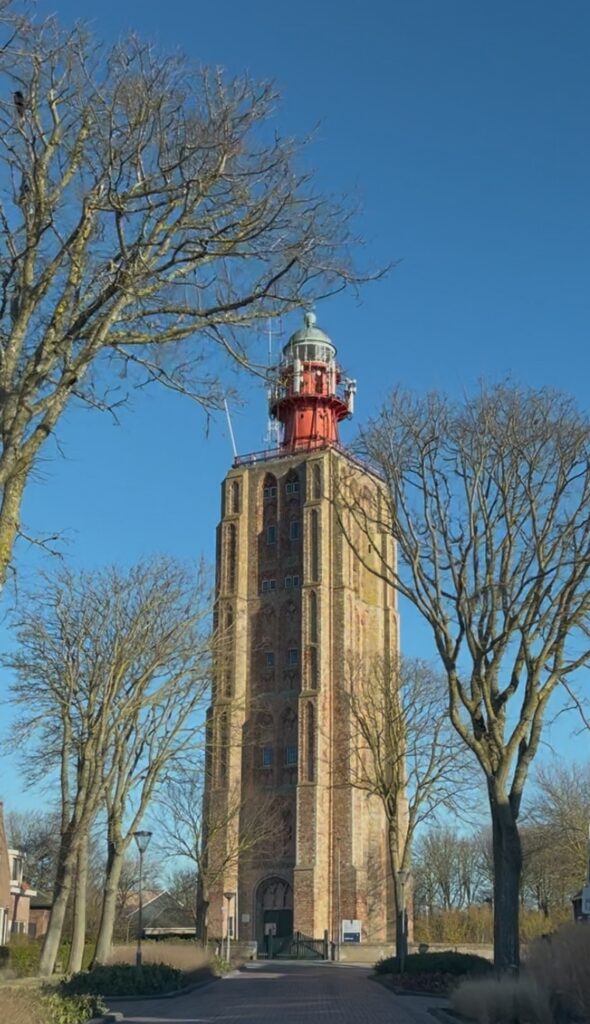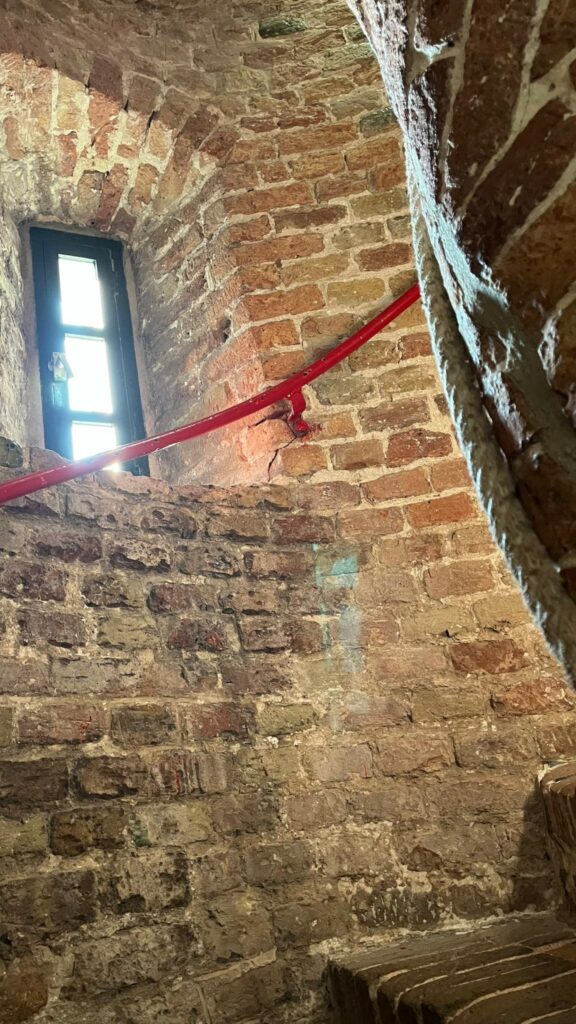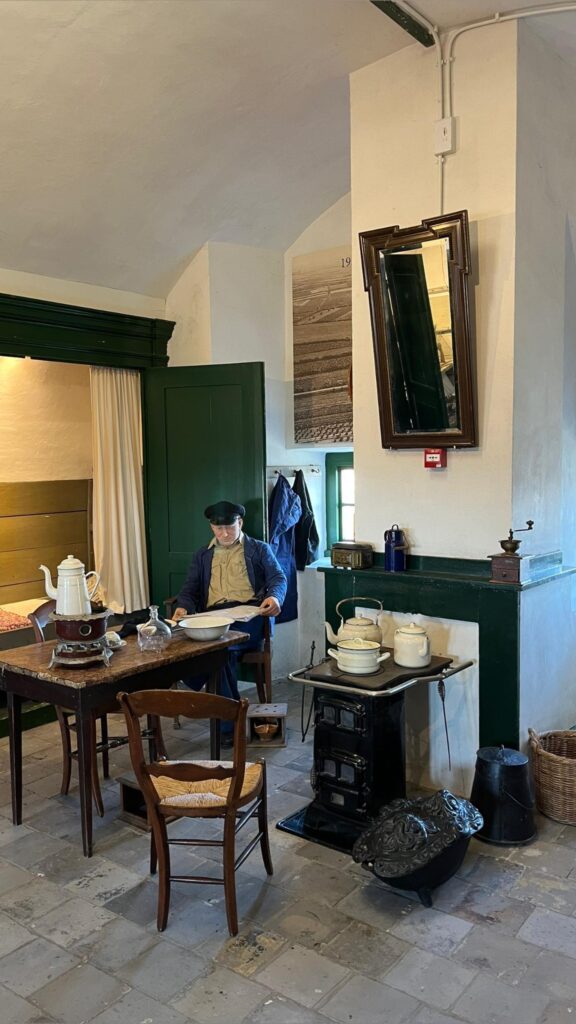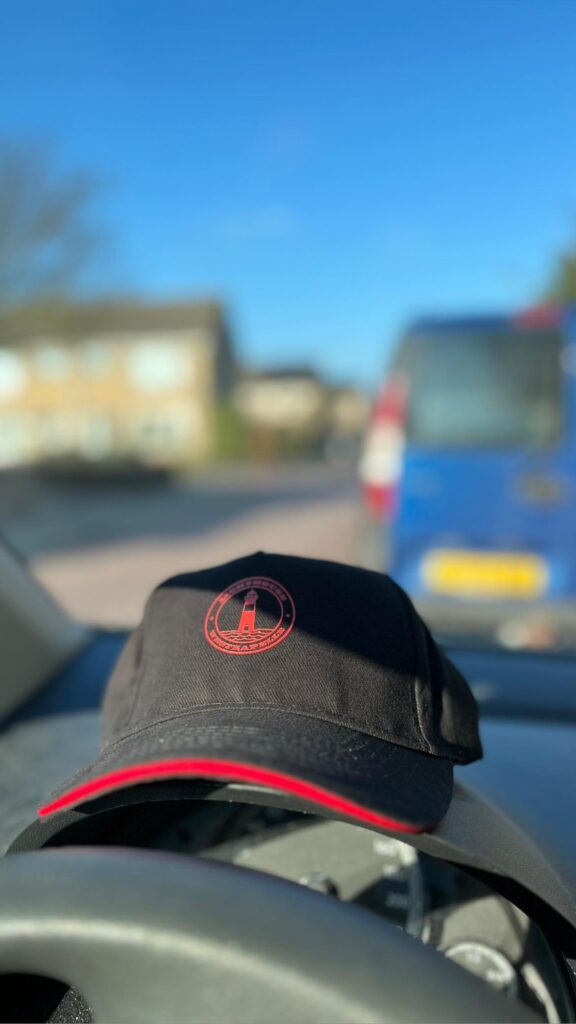I recently had the chance to visit one of the most iconic landmarks on the Dutch coast – the Westkapelle Lighthouse. It’s not just a beautiful structure but also a place steeped in history, guiding ships through the treacherous waters of the North Sea for centuries.

A Brief History of the Westkapelle Lighthouse
The lighthouse was built on the ruins of the medieval St. Willibrord Church, which was destroyed in the 15th century. The current tower dates back to 1818, when it was converted into a lighthouse. Its striking red brick structure, standing at 53 meters high, has become one of the symbols of the Zeeland region.
Originally, as early as the 11th century, a church stood on this spot, but over time, severe storms caused it to disappear into the sea. Between 1458 and 1470, the church was rebuilt as a three-nave structure, but after a fire in 1831, it was completely destroyed. The only part that remained intact was the tower, which was ultimately turned into a lighthouse.


In 1817, the Dutch government decided to transform the tower into a lighthouse. It was first equipped with 15 oil lamps to provide illumination. In 1851, a state-of-the-art first-order Fresnel lens was installed, significantly improving the range of the light. Then, in 1907, a red iron top structure was added, featuring a so-called “flashlight” that produced a staggering 6.2 million candelas – making it one of the most powerful coastal lights in Europe at the time.
During World War II, the lighthouse played a key role in military operations. In 1944, Allied forces bombed the dikes protecting Westkapelle, flooding the area to drive out German troops. The Germans had taken over the lighthouse, using it as a lookout point. Unfortunately, the original optical system was destroyed in the fighting. In 1951, it was replaced with a new system featuring a distinctive blue light, which is still in operation today.
Facts About the Lighthouse
- The Westkapelle Lighthouse is one of the oldest in the Netherlands and continues to guide ships navigating the Western Scheldt (Westerschelde).
- Unlike many lighthouses, its light isn’t at the very top but housed in a special lantern structure.
- The lighthouse is open to visitors, and the view from the top is absolutely breathtaking.
- Inside, you can see the optical mechanism – currently, a third-order Fresnel lens rotating five times per minute.
- There are 218 steps to the top: 162 made of stone, 17 wooden, and 39 iron.
- The lighthouse was famously painted by Dutch artist Piet Mondriaan between 1908 and 1910, making it known worldwide.
My Experience Visiting the Lighthouse
Walking through Westkapelle, you can really feel the history and tranquility of this coastal town. The lighthouse stands tall over the landscape, and at night, its beacon reminds visitors of its enduring purpose. Climbing to the top was an incredible experience, offering panoramic views of the North Sea and the surrounding Zeeland countryside.
If you’re looking for a destination that blends history, stunning views, and a unique maritime atmosphere, the Westkapelle Lighthouse should definitely be on your travel list!

Leave a Reply